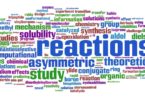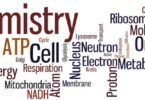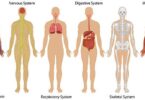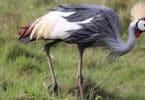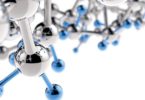Which of the following has no blood but breathes?
(a) Cockroach
(b) Earthworm
(c) Fish
(d) Hydra
__ is a blood agent poison
(a) Nitrate
(b) Cyanide
(c) Nicotine
(d) Sulfuric Acid
When there is a decrease in the concentration of oxygen in the blood, the breathing rate?
(a) increases
(b) decreases
(c) first increases and then decreases
(d) is not affected
Artificial blood is
(a) Chlorofluorocarbons
(b) P.F.C. (Perfluorocarbons)
(c) Limpho Sulphate Dichloro
(d) Leghaemoglobin
Which is the principal cation in the plasma?
(a) Sodium
(b) Potassium
(c) Magnesium
(d) Calcium
Thromboplastin, required in blood clotting, is secreted by __
(a) monocytes
(b) lymphocytes
(c) erythrocytes
(d) platelets
Which one of the following binds with Hemoglobin irreversibly?
(a) Methane
(b) Carbon monoxide
(c) Ethane
(d) Chlorine
Name the blood cell which is found in abundance in the human body
(a) R.B.C.
(b) Plasma
(c) proteins
(d) WBC
Related: Radiology MCQs with answers
The largest number of white blood corpuscles are
(a) Eosinophils
(b) Basophils
(c) Neutrophils
(d) Monocytes
Persons with which blood group are called universal donors?
(a) A.B.
(b) A
(c) O
(d) B
The number of R.B.C.s per 3 mm of blood in an adult man is.
(a) 500
(b) 5000
(c) 500000
(d) 5000000
Who discovered the ‘circulation of blood’ in the human body?
(a) Edward Jenner
(b) Joseph Lister
(c) William Harvey
(d) Jonon Esals
Which of the following vitamins is responsible for blood clotting?
(a) Vitamin C
(b) Vitamin D
(c) Vitamin E
(d) Vitamin K
Related: Respiratory system test questions
At high altitudes, R.B.C.s of human blood will __
(a) increase in number
(b) decrease in number
(c) decrease in size
(d) increase in size
Which of the following is called a blood bank?
(a) Spleen
(b) Liver
(c) Heart
Which of the following contains Hemoglobin?
(a) Plasma
(b) R.B.C.
(c) WBC
(d) Platelets
If a person, normally living at sea level, migrates to a hill of about 8000 feet high, his blood, after about fifteen days, will have
(a) Fewer W.B.C.
(b) More plasma
(c) More antibodies
(d) Greater number of R.B.C.
In which vertebrate oxygenated and deoxygenated blood gets mixed?
(a) Fish
(b) Amphibian
(c) Bird
(d) Mammal
Related: Redox reaction practice problems with answers
The smallest blood vessel in the body is a
(a) Capillary
(b) Artery
(c) Vena cava
(d) Vein
What volume of blood enters the renal arteries per minute in man?
(a) 100 ml
(b) 500 ml
(c) 1200 ml
(d) 5000 ml
Oxygenated blood is carried by
(a) Pulmonary vein
(b) Pulmonary artery
(c) Hepatic portal vein
(d) Renal vein
In a closed circulatory system, blood is completely enclosed within.
(a) the skeleton
(b) Sinuses
(c) Vessels
(d) Heart
The dissociation of oxyhemoglobin is directly proportional to carbon dioxide tension and is known as
(a) Haldane effect
(b) Chloride shift
(c) Bohr effect
(d) Hering-Breure inflamation reflex
Related: Nervous System Practice Questions
Which of the following prevents the filtration of larger proteins from blood into nephric filtrate?
(a) Endothelial fenestration
(b) Slit membrane between pedicels
(c) Basal lamina of glomerulus
(d) Outer wall of Bowman’s capsule
The number of R.B.C.s per unit volume of blood is likely to be higher in a person living at higher altitudes because
(a) Air is clear and unpolluted
(b) Air is less dense, i.e. with less Oxygen
(c) More sunshine is available
(d) Vegetation gives out more O2
Without which corpuscles is blood clotting not possible?
(a) Erythrocytes
(b) Thrombocytes
(c) Plasmocytes
(d) Leucocytes
The amount of Oxygen normally carried by 100 ml of pure blood is
(a) 50 ml
(b) 2 ml
(c) 20 ml
(d) 5ml
Cells forming the wall of blood capillaries are called
(a) Oxynthic cells
(b) Endothelial cells
(c) Parietal cells
(d) Hemocytes
Related: Glycolysis questions
R.B.C. of camel are
(a) Oval, non-uncleated
(b) Round, biconvex nucleated
(c) Round biconvex, non-nucleated
(d) Oval, nucleated, biconvex
Normally, blood clots in
(a) 12-16 Minutes
(b) 16-20 Minutes
(c) 1 minute
(d) 2-8 Minutes
R.B.C.s are formed in the __
(a) Liver
(b) Bone marrow
(c) Kidneys
(d) Heart
The chemical that prevents blood clotting is
(a) Filoquilon
(b) Thiamin
(c) Cynocvalamine
(d) Heparin
Related: Space question
Which blood group can be a universal donor?
(a) O
(b) A
(c) B
(d) A.B.
Blood is formed in the human adult by
(a) Heart
(b) Red bone marrow
(c) Spleen
(d) yellow bone marrow
The Oxygen dissociation curve of Hemoglobin is
(a) Hyperbolic
(b) Hypobolic
(c) Sigmoid
(d) Linear
The oxygen carrier is:
(a) Iron
(b) Meth–Hemoglobin
(c) Hemocyanin
(d) Hemoglobin
A person of group A.B. can give blood to :
(a) ‘A’ and ‘B’
(b) Only ‘A.B.’
(c) ‘A’, ‘B’ and ‘O’
Related: Conservation of Linear momentum questions and answers
About how much blood is in the circulatory system of an average person
(a) 7 liters
(b) 2 liters
(c) 5 liters
(d) 13 liters
In which organ the blood is stored
(a) Spleen
(b) Liver
(c) Kidney
(d) Heart
Oxygen is transported in blood mainly by
(a) Leucocytes
(b) Erythrocytes
(c) Thrombocytes
(d) Plasma
The blood pressure of a young male human being is
(a) 110/70
(b) 120/80
(c) 135/90
(d) 140/100
Blood will lose maximum Oxygen when it passes through
(a) Alveolar capillaries
(b) Tissue capillaries
(c) Arteries
(d) Veins
Related: Science questions and answers
Which type of dominance is human blood group inheritance?
(a) Complete dominance
(b) Incomplete dominance
(c) Codominance
(d) Irregular dominance
Blood pressure is controlled by—
(a) Adrenal gland
(b) Thyroid gland
(c) Thymus
(d) Corpus luteum
Myeloid stem cells give rise to all the formed elements of blood except
(a) Platelets
(b) Monocytes
(c) Eosinophils
(d) lymphocytes
Blood capillaries are made up of
(a) Endothelium and thin coat of connective tissue
(b) Endothelium and the thin coat of muscle fibers
(c) Endothelium and thin coat of connective tissue and muscle fibers
(d) Only endothelium
Which of the following is an anticoagulant which checks coagulation in vessels?
(a) Prothrombin
(b) Globulin
(c) Thromboplastin
(d) Heparin
Related: Alternate Current Circuit Physics Quiz
Low oxygen concentration favors
(a) Union of carbon dioxide from proteins
(b) Separation of carbon dioxide from proteins
(c) Separation of carbon dioxide from Hemoglobin
R.B.C. was kept in a solution. In a few minutes, it burst. The solution was
(a) Hypertonic
(b) Isotonic
(c) Hypotonic
(d) Canesuger solution
Red blood cells live for
(a) 12 days
(b) 20 days
(c) 100 days
(d) 120 days
Harmful bacteria and other foreign bodies are destroyed by
(a) Plasma protein
(b) Platelets
(c) Phagocytosis by R.B.C.
(d) Phagocytosis of WBC
Related: Animal nutrition questions and answers
Rejection of a transplanted organ is brought about by
(a) B cells
(b) T cells
(c) Natural Killer cells
(d) Monocytes
Which of the following formed elements changes into macrophages?
(a) Eosinophils
(b) Basophils
(c) Neutrophils
(d) Monocytes
The largest type of white blood cell is
(a) Lymphocyte
(b) Basophil
(c) Neutrophil
(d) Monocyte
Thalassemia is caused to
(a) Excessive loss of R.B.C.s through bleeding
(b) Insufficient hemopoiesis
(c) Efficient synthesis of Hemoglobin
(d) Inadequate absorption of iron
A characteristic of leucocytes is
(a) Denucleation (loss of nucleus)
(b) Diapedesis
(c) Agranular cytoplasm
(d) Color
The chambers which receive the blood from body tissues are called
(a) Ventricles
(b) Pericardium
(c) Auricles
(d) Aorta
The WBC releases certain compounds, raising the body’s temperature. These compounds are known as
(a) Pyrogens
(b) Histamines
(c) Toxigens
(d) Pathogens
Related: capacitor practice problems
What color is a squid’s blood when oxygenated?
(a) Blue
(b) Bright green
(c) Bright red
(d) Colorless
Jugular veins carry blood away from which part of the body?
(a) Liver
(b) Feet
(c) Arms
(d) Head

